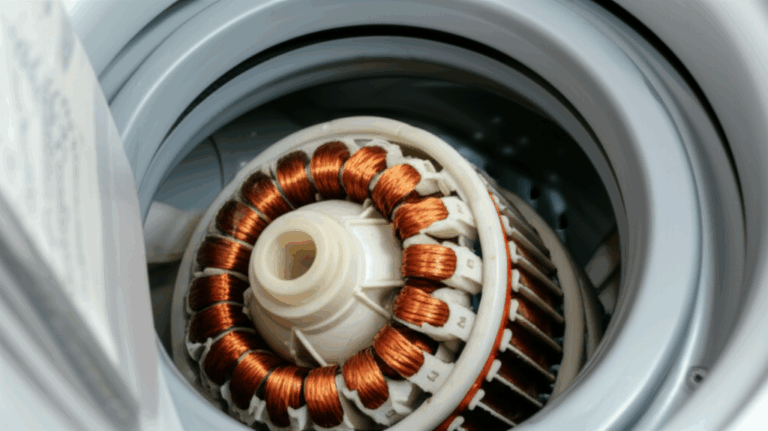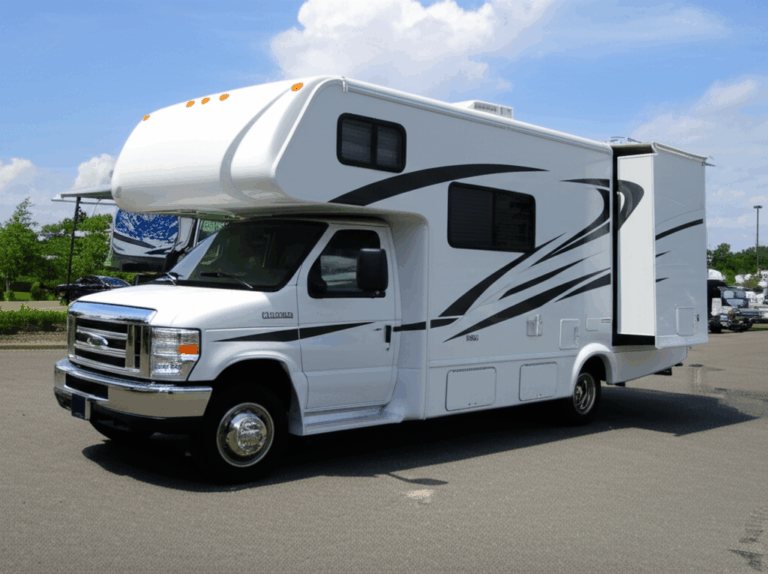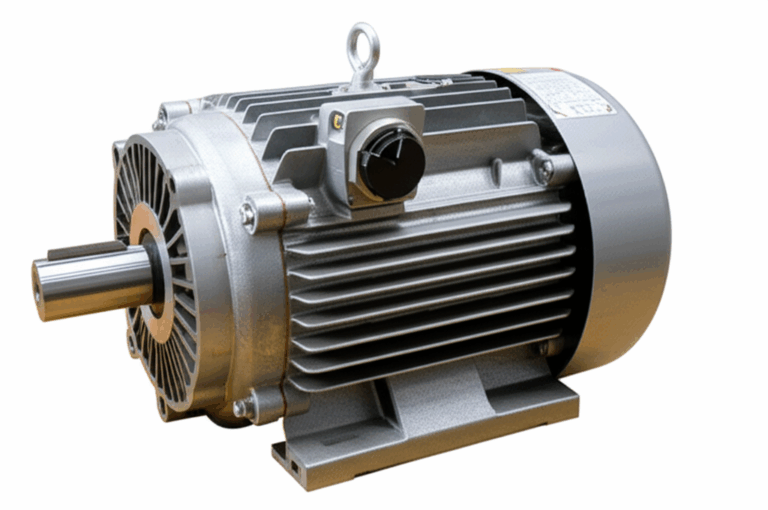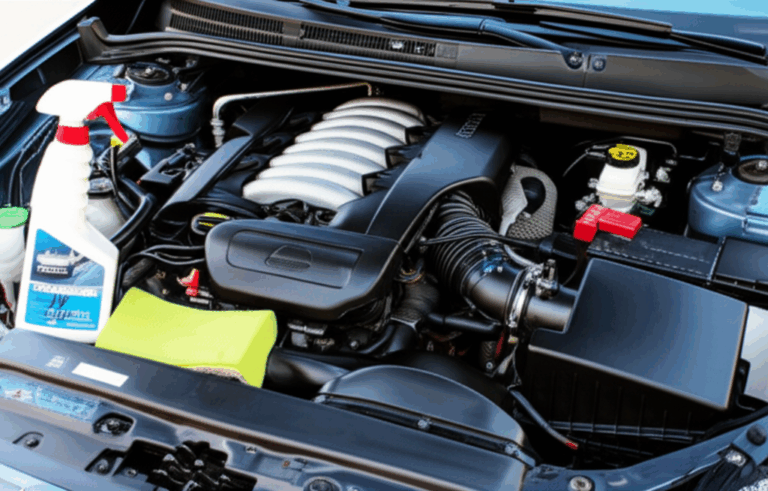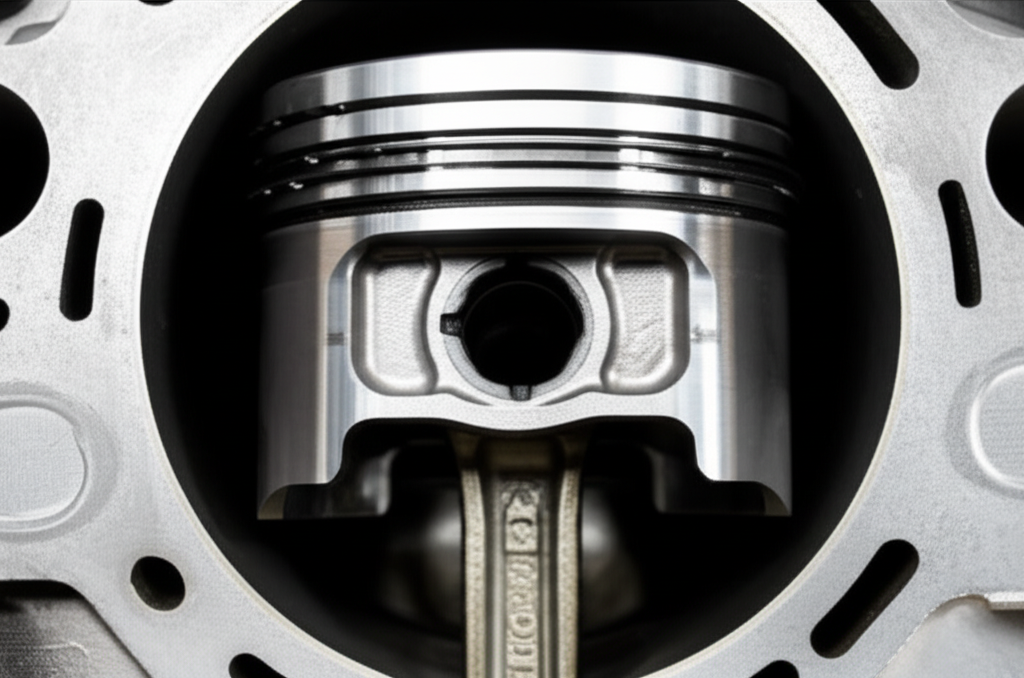
What is Motor Displacement? The Complete Guide to Engine Size & Performance
- Table of Contents
- What is Motor Displacement? The Complete Guide to Engine Size & Performance
- What Is Motor Displacement in Simple Words?
- Why Does Engine Size Matter to You?
- How Do Bore, Stroke, and Cylinders Set Displacement?
- How Do You Calculate Engine Displacement?
- Does More Displacement Mean More Power and Torque?
- How Does Displacement Affect Fuel Use and Emissions?
- Liters, CC, and Cubic Inches: What Do They Mean?
- How Does Displacement Shape the Driving Feel?
- What Are the Big Trends: Downsizing, Turbos, and Cylinder Shutoff?
- Real-World Engine Sizes: Cars, Trucks, Bikes, Boats, and Racing
- Is Bigger Always Better? Pros and Cons
- Can You Change Displacement by Mods or Rebuilds?
- What About Electric Motors: No Displacement Yet Big Power
- How to Choose the Right Engine Size for Your Life
- Quick Comparison Table: Small vs Large Displacement
- Common Questions (FAQ)
- References
- Key Takeaways
Here’s the short story. Motor displacement is the size of an engine. It tells you how much air and fuel the pistons can sweep in all the cylinders. We measure it in liters, CCs, or cubic inches. Why read this? You’ll learn what the numbers mean. You’ll see how they affect power, torque, fuel use, and the driving feel. You’ll also learn why a small turbo can hit above its weight. I’ll walk you through it in plain English.
I write this in first person because I’ve been there. I’ve bought cars. I’ve towed gear. I’ve paid fuel bills. I’ll show you what matters so you can choose well.
What Is Motor Displacement in Simple Words?
Problem: You see “2.0L” or “1500 CC” on a car spec sheet. It looks like code. You don’t know what it means. You feel stuck.
Agitate: If you guess wrong, you may buy a car that feels slow or drinks gas. You might pay more than you need.
Solution: Think of displacement as the engine’s lungs. Bigger lungs can breathe in more air and fuel. More mix can make more power. In simple terms, engine size definition equals the total space the pistons sweep in the cylinders during one full stroke. That’s the motor volume. We call it engine capacity. We use liters (L), cubic centimeters (CC), or cubic inches (CI) to show the size.
When you see “What does 2.0L engine mean,” it means the total volume is two liters. A 2.0L can be a four-cylinder, a V6, or even a turbo. The layout shapes the feel. The size sets the stage.
Why Does Engine Size Matter to You?
You want to know what you get. You care about power, torque, fuel efficiency, and emissions. Big or small, each path has trade-offs.
- Bigger displacement often gives more horsepower (HP) and torque. That helps with towing, passing, and hauling.
- Smaller engines can burn less fuel. They can cut fuel consumption and CO2. They may cost less to run in daily life.
- Your driving experience changes too. Some engines pull hard at low RPM. Others come alive at high RPM.
I like to think of it this way. Big engines can feel like a strong farm horse. Small turbo engines can feel like a fit sprinter. Both can win. The job decides the champ.
How Do Bore, Stroke, and Cylinders Set Displacement?
Let’s break down the parts. A cylinder is the round space where the piston moves. The bore is the cylinder’s width. The stroke is how far the piston travels up and down. The crankshaft and connecting rod turn that motion into spin. The combustion chamber sits at the top near the valves and spark plug.
- A wide bore can help high RPM engine output. It leaves room for bigger valves.
- A long stroke can boost torque at low RPM.
- More cylinders can make the engine smoother. An inline engine is simple. A V-engine like a V6 or V8 is compact. A flat/boxer engine sits low for balance.
These build the engine architecture. They also shape the compression ratio, volumetric efficiency, and even power density. All these affect how your engine breathes and how it pulls.
How Do You Calculate Engine Displacement?
Here’s the simple engine displacement calculation. It’s not hard.
- Volume of one cylinder = π × (Bore/2)² × Stroke
- Total engine displacement = Volume of one cylinder × Number of cylinders
Example: A four-cylinder with a 86 mm bore and 86 mm stroke.
- One cylinder volume ≈ 3.1416 × (43 mm)² × 86 mm ≈ 499,545 mm³
- Convert mm³ to cm³ (divide by 1,000). So about 499.5 CC per cylinder.
- Total = 499.5 CC × 4 ≈ 1,998 CC ≈ 2.0L
Now you can measure engine displacement if you know bore, stroke, and cylinder count. That’s how makers set the engine specs and manufacturer specifications for engine capacity standards.
Does More Displacement Mean More Power and Torque?
Often yes. A larger cubic capacity lets the engine burn more air and fuel. That can raise horsepower and torque. You also feel stronger low-end grunt. That helps for towing and hills.
But there’s a twist. A small engine with a turbocharger or supercharger can punch above its weight. This is forced induction. It packs more air into the same volume. That boosts power-to-weight ratio and power density. A 2.0L turbo can match an older 3.0L naturally aspirated engine. You can see displacement vs horsepower and displacement vs torque play out in the real world.
So does more displacement mean more power? Usually. Does a smaller turbo engine lag behind? Not always. Tech changed the game.
How Does Displacement Affect Fuel Use and Emissions?
Problem: Fuel costs rise. You want good fuel efficiency. You also care about the air we breathe.
Agitate: A big engine can drink more gas. You pay more at the pump. You also release more CO2 and other pollutants.
Solution: Smaller engines can save fuel. Makers use direct injection, variable valve timing (VVT), and high volumetric efficiency to cut fuel consumption. Some use hybrid engines to shut off fuel when you coast. Engine downsizing with turbos gives strong power when you need it. It sips fuel when you don’t.
Global rules like Euro 6 and EPA standards push for lower emissions. This drives engine technology advancements and engine efficiency improvements. It also drives engine design principles that aim for cleaner air.
Liters, CC, and Cubic Inches: What Do They Mean?
We use three common units.
- 1 liter (L) = 1,000 cubic centimeters (CC)
- 1 liter ≈ 61.024 cubic inches (CI)
- 1 cubic inch ≈ 16.387 CC
Here’s a quick table you can use.
| Unit | Equals |
|---|---|
| 1 L | 1,000 CC |
| 2.0 L | 122.0 CI |
| 3.5 L | 213.6 CI |
| 1,600 CC | 1.6 L |
| 305 CI | ≈ 5.0 L |
You’ll see metric vs Imperial displacement in specs. Bikes often use CC. Cars often use L. Older U.S. cars use CI. This is why you also see liter to cubic inch conversion and CC to liter conversion charts. Groups like SAE International help align SAE engine displacement methods and engine capacity standards so numbers match across markets.
How Does Displacement Shape the Driving Feel?
I remember my first compact car. It had a small 1.5L. It felt light in the city. It sipped fuel. On a steep hill it needed a downshift. Later I drove a 5.3L V8 truck. It had strong pull at idle. It towed my trailer with ease.
- Small engines (1.0L to 2.0L) fit economy cars and city life. They offer easy parking and good MPG.
- Mid-size engines (2.0L to 4.0L) balance pep and calm. Great for sedans, mid-size SUVs, and light-duty trucks.
- Large engines (4.0L+) fit performance cars, luxury vehicles, heavy-duty trucks, marine engines, and industrial applications that need max torque.
You’ll also feel a change in throttle response, engine smoothness, and sound/character. Many people love the rumbly note of V6 and V8 engines. An inline four can sound neat and clean. A flat/boxer has a unique rhythm. Sound is not just noise. It’s part of the vehicle performance story.
What Are the Big Trends: Downsizing, Turbos, and Cylinder Shutoff?
Car makers chase more with less. They use:
- Engine downsizing with turbocharging or supercharging. This is small displacement big power. A 2.0L turbo can act like an older 3.0L NA. It can also improve fuel economy on the highway.
- Variable displacement engines with cylinder deactivation. Some V8 engines shut off four cylinders on light loads. This can improve L/100km or MPG.
- Smarter air and fuel like direct injection and variable valve timing. These raise volumetric efficiency. They help pass emissions rules.
You also see hybrid engines that pair an engine with an electric motor. This lowers fuel use in the city. Some cars run on the electric side at low speed. The engine rests and saves fuel.
Real-World Engine Sizes: Cars, Trucks, Bikes, Boats, and Racing
Let’s look at common sizes.
- Small displacement engines (1.0L–2.0L): Found in compact cars, subcompacts, small SUVs, and motorcycle engine displacement ranges. Great for city life and school runs. Many use turbocharging now.
- Mid-size displacement engines (2.0L–4.0L): Sedans, mid-size SUVs, and light-duty trucks. Good mix of power and economy.
- Large displacement engines (4.0L+): Performance cars, luxury, pickup trucks, marine industry, industrial engines. Top towing capacity and refined output.
Racing sets limits too. Formula 1 uses small turbo engines by rule. MotoGP and NASCAR have their own engine displacement limits. Rules keep racing fair and safer. Even aerospace engine displacement matters for piston aircraft engines.
Here’s a fun case. The Ford F-150 once used a 5.4L V8 NA. Then the 3.5L V6 twin-turbo came along. The modern 3.5L often makes more HP and torque. It can also post better combined MPG. This shows how forced induction and displacement interact.
Is Bigger Always Better? Pros and Cons
Bigger displacement brings clear wins.
- Pros: More torque. Easier towing. Strong response. Great sound.
- Cons: Higher fuel consumption. More CO2. Possible higher insurance costs in some markets. Heavier engine weight.
Small displacement brings balance.
- Pros: Better fuel efficiency. Lower emissions. Light weight helps handling and power-to-weight ratio. Lower cost in many cases.
- Cons: May feel weak without a turbo. Can work harder at high loads. Some small engines use complex tech that can raise complexity/cost.
Is bigger always better? Not for everyone. Is smaller always best? Not for every job. Match the engine to your needs.
Can You Change Displacement by Mods or Rebuilds?
Yes you can. You can bore out the cylinders a bit. You can change the crankshaft to alter the stroke. This is common in engine rebuild displacement change projects. You might use a “stroker” kit. This adds volume and can raise torque.
But know the trade-offs. More displacement can change the compression ratio. You may need higher octane rating fuel. You can stress parts if you go too far. Engine tuning also affects engine performance metrics. If you add a turbo later, you should plan the whole system. You want safe temps and strong oiling.
What About Electric Motors: No Displacement Yet Big Power
Electric motors don’t use displacement. They don’t have cylinders, bore, or stroke. They use magnets, coils, and steel cores. Yet they make instant torque. That’s why EVs jump off the line.
What matters in an electric motor? The quality of the core and windings. The stator stays still. The rotor spins. Thin steel sheets called laminations help reduce losses. If you want to go deeper, study the craft behind high-grade cores. You can learn how a well-built stator core lamination improves efficiency. You can also see how a precise rotor core lamination boosts smooth power. Makers rely on advanced motor core laminations and top-grade electrical steel laminations to cut heat and raise performance.
So here’s the contrast. Displacement explains the size and breath of an internal combustion engine. Electric motors have no displacement. They win with smart design, tight windings, and high efficiency in the stator and rotor. Different heart. Same goal. Strong, clean power.
How to Choose the Right Engine Size for Your Life
Problem: You face too many choices. Specs blur together.
Agitate: Pick wrong, and you’ll hate the drive every day. Or you’ll burn cash on fuel. Or you won’t have the torque to tow your boat.
Solution: Match the engine to your job.
- City driving and school runs: 1.0L to 2.0L. Look for a turbo if you want extra pep.
- Weekend trips and family duty: 2.0L to 3.5L. Balance power and fuel economy.
- Towing or work truck: 3.0L to 6.0L+. Go for more torque. Check the power-to-weight ratio and vehicle weight. Make sure the gearing fits the task.
- Performance car: It depends. A 2.0L turbo can be a rocket. A V8 can be a thrill. Test drive both.
- Motorcycle: Cubic centimeters engine size runs wide. 125 CC up to 1,200 CC and more. Lighter bikes feel quick with less power. Fit the bike to your skill.
- Marine or industrial: Look for engine displacement that fits sustained loads. Cooling and torque matter more than peak HP.
Also check resale value and engine displacement trends in your area. Some markets value small, clean engines. Others love big V8s. Ask your insurance agent if size changes your rate. It can in some places.
Quick Comparison Table: Small vs Large Displacement
Here’s a simple chart that sums up trends, characteristics, and performance metrics.
| Metric | Small Displacement (1.0L–2.0L) | Large Displacement (3.0L–6.0L+) |
|---|---|---|
| Power | Moderate to high with turbo | High to very high |
| Torque | Strong low-mid with turbo | Very strong across wide RPM |
| Fuel Use | Lower L/100km; higher MPG | Higher L/100km; lower MPG |
| Emissions | Lower per mile | Higher per mile |
| Weight | Lighter engine | Heavier engine |
| Complexity | Higher with turbo and DI | Lower if NA; can be complex if forced induction |
| Sound | Refined; can be flat | Deep, rumbly, visceral |
| Common Use | Compact cars, small SUVs, bikes | Trucks, performance cars, marine, heavy duty |
Note: Modern 2.0L turbos can match older 3.0L–3.5L NA engines. That’s downsizing at work.
Common Questions (FAQ)
Q: Is bigger engine displacement always better?
A: Not always. Bigger brings torque and easy power. It can cost more to fuel. Smaller engines can use direct injection and turbocharging to feel quick. Pick what fits your life.
Q: What’s the difference between CC and liters for engine size?
A: Both show engine capacity. 1 liter equals 1,000 CC. Bikes use CC a lot. Cars use liters.
Q: How does turbocharging change the impact of displacement?
A: A turbo packs more air into the cylinder. A small displacement engine can make big power. You get small displacement big power. You may still save fuel when you cruise.
Q: Can engine displacement be changed by mods?
A: Yes. You can bore and stroke. That changes the bore and stroke and raises volume. Plan your engine tuning. Watch compression ratio and octane rating.
Q: Does engine displacement affect car insurance costs?
A: It can in some markets. Ask your agent. Rates depend on many things like power, age, and location.
Q: What about Wankel or rotary engines?
A: A Wankel engine does not have pistons in cylinders. Displacement is measured in a different way. Power can be high for the size.
Q: How do standards handle specs?
A: SAE International and others create methods to report engine output, horsepower, and engine capacity. This helps you compare.
Q: What’s volumetric efficiency?
A: It tells how well the engine fills with air. Higher is better. Turbos and good VVT can raise it.
Q: Why are engines measured in liters?
A: It’s a simple way to show size. It’s part of engine terminology and common manufacturer specifications.
Q: What is power density vs displacement?
A: Power density is power per liter. A high number means the engine makes a lot of power for its size.
References
- U.S. Environmental Protection Agency (EPA). “Light-Duty Automotive Technology, Carbon Dioxide Emissions, and Fuel Economy Trends.”
- SAE International. “SAE J1349 Engine Power Test Code.”
- European Union Emissions Standards. “Euro 6/VI.”
- Manufacturer spec sheets for example vehicles and engines.
Key Takeaways
- Motor displacement is the total space the pistons sweep. It shows engine size in liters, CC, or cubic inches.
- Bigger displacement can bring more horsepower and torque. It can also burn more fuel.
- Small turbo engines can match larger old-school engines. That’s engine downsizing with forced induction.
- Bore, stroke, and number of cylinders set the size. Use the simple formula to calculate volume.
- Fuel efficiency and emissions tie to size and tech. Direct injection, VVT, and cylinder deactivation help a lot.
- Pick engine size to fit your life: city, family trips, towing, or speed fun.
- Electric motors have no displacement. They rely on the quality of the stator and rotor and on smart design with high-grade laminations.
- For deeper motor build quality, study stator core lamination, rotor core lamination, motor core laminations, and electrical steel laminations.
- Match the engine to your job. Then you’ll love your drive and keep your budget in check.

